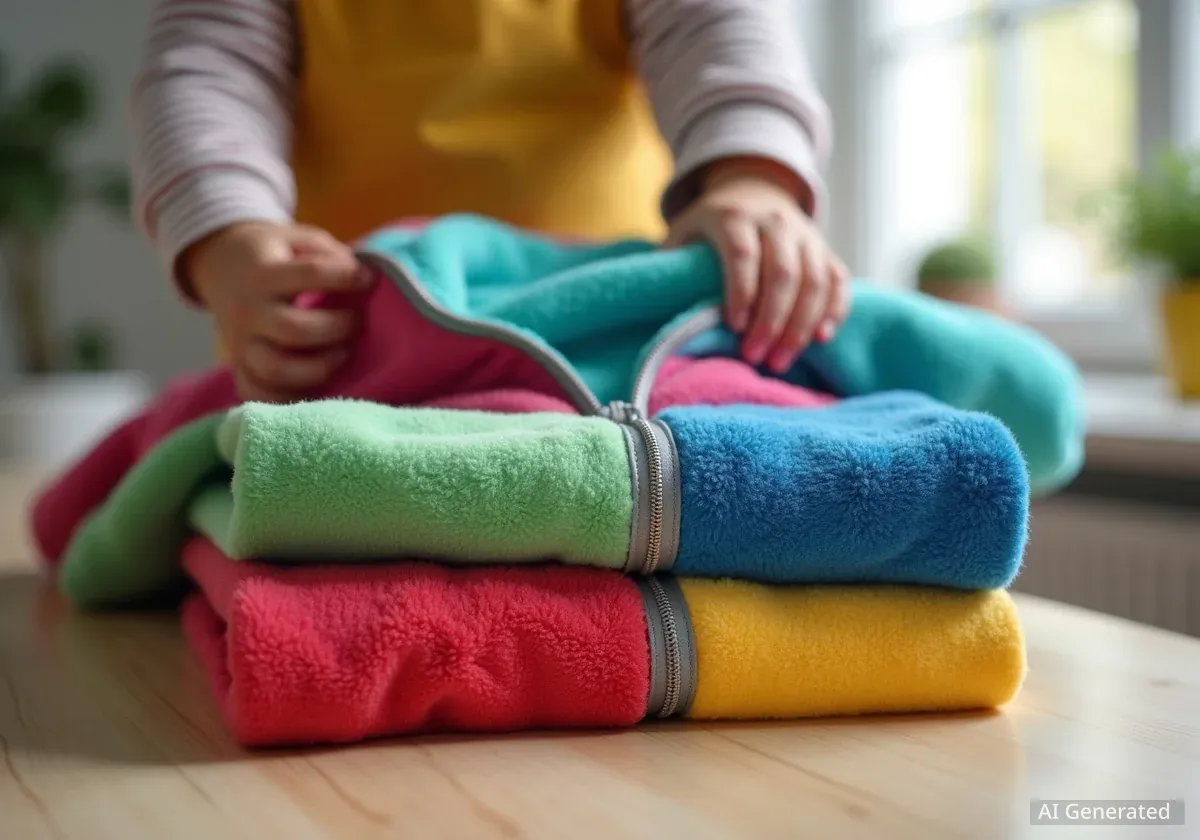As cooler temperatures approach, selecting appropriate outerwear for children becomes a key consideration for parents. A well-chosen fleece jacket can provide essential warmth, comfort, and durability for a range of activities, from daily school commutes to weekend outdoor adventures. Understanding the materials, design features, and care requirements is crucial for finding a garment that meets a child's needs throughout multiple seasons.
Key Takeaways
- Fleece and polyester blends offer a combination of warmth, light weight, and softness, making them suitable for children's active lifestyles.
- Practical design elements like a full-zip front, a protective hood, and functional pockets enhance the usability of a child's jacket.
- Versatile fleece outerwear can be used across different seasons, including fall, winter, and spring, for various occasions from casual wear to sports.
- Proper care, such as washing at low temperatures and avoiding bleach, is essential for maintaining the fabric's integrity and extending the garment's life.
Understanding Fleece and Polyester Blends
The primary material in many modern children's jackets is a blend of fleece and polyester. This combination is chosen for specific functional reasons. Polyester is a synthetic fabric known for its durability and resistance to shrinking and stretching. It also wicks moisture away from the body, which is important for active children.
Fleece, often made from polyester, is engineered to mimic the properties of wool but in a much lighter form. It is composed of fine fibers that trap air, creating an insulating layer that retains body heat effectively. This makes heavyweight fleece an excellent material for cold weather without adding excessive bulk that could restrict movement.
Material Profile: Polyester
Polyester accounts for over 50% of the global fiber market. Its widespread use in apparel is due to its high strength, resistance to chemicals and wrinkles, and quick-drying properties, making it a practical choice for children's clothing that requires frequent washing.
Essential Design Features for Kids' Jackets
Beyond the fabric, the functional design of a jacket is critical for a child's comfort and convenience. Several key features contribute to a jacket's overall utility.
Hoods and Zippers
A built-in hood offers immediate protection from wind and light precipitation, eliminating the need for a separate hat. For safety and ease of use, a full-length zipper is preferable for children. It allows them to put on and take off the jacket independently and provides a simple way to regulate their temperature.
Functional Pockets
Pockets are more than just a design detail; they serve a practical purpose. Two front pockets provide a warm place for hands on chilly days. They also give children a convenient spot to carry small items like toys, snacks, or treasures found during outdoor play.
The Evolution of Fleece
Fleece was first developed in 1979 by Malden Mills (now Polartec, LLC) as a synthetic alternative to wool. Its creators aimed to produce a fabric with wool's insulating properties but without its weight and tendency to retain moisture. The result was a material that revolutionized outdoor and performance apparel.
Versatility for Year-Round Use
One of the main advantages of a fleece jacket is its adaptability. It is not limited to a single season. During the crisp days of fall and the milder parts of spring, it can serve as a primary piece of outerwear. In the colder months of winter, it functions as an excellent mid-layer under a heavier, waterproof coat for added insulation.
This versatility extends to various activities and occasions. A durable fleece jacket is suitable for:
- Daily wear for school or daycare
- Outdoor activities like hiking and sports
- Family travel and vacations
- Special events such as birthday parties or holiday gatherings
The availability of playful prints and designs, such as space or food themes, also makes the jackets more appealing to children, encouraging them to wear their protective layers.
Sizing and Care for Longevity
Choosing the right size is important for both comfort and function. Children's jackets are typically sized by age, such as 3T, 4T, 5T, and age ranges like 7-8 years or 9-10 years. It is often wise to select a size that offers a little room for growth and for layering other clothes underneath.
To ensure the jacket lasts, proper care is essential. Following the manufacturer's instructions can preserve the softness and insulating properties of the fleece.
"Proper garment care is crucial for performance fabrics. We generally recommend hand washing or using a gentle, low-temperature cycle in a machine. High heat can damage the synthetic fibers, and harsh chemicals like bleach can degrade the material over time." - Textile Care Specialist
Simple care steps include machine washing at a low temperature and avoiding bleach. These practices help maintain the fabric's structure and vibrant colors, ensuring the garment remains a reliable piece of outerwear for as long as possible.


